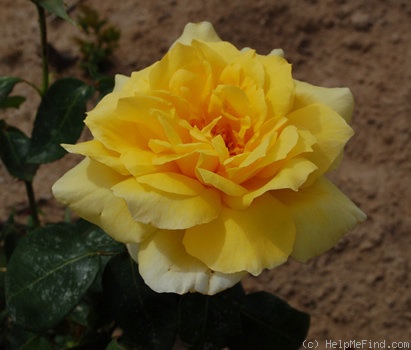|
|
'Madame Marie Curie' rose Description

Photo courtesy of jedmar
HMF Ratings:
18 favorite votes.
Average rating:
GOOD+.
ARS:
Deep yellow Hybrid Tea.
Registration name: Madame Marie Curie
Exhibition name: Madame Marie Curie
Bloom:
Deep yellow. Mild fragrance. 25 petals. Average diameter 5". Very large, double (17-25 petals), high-centered bloom form. Blooms in flushes throughout the season. Pointed buds.
Habit:
Bushy, compact. Dark green, leathery foliage.
Height: 20" to 28" (50 to 70cm).
Growing:
USDA zone 6b through 9b (default). Can be used for cut flower or garden. Very vigorous. Spring Pruning: Remove old canes and dead or diseased wood and cut back canes that cross. In warmer climates, cut back the remaining canes by about one-third. In colder areas, you'll probably find you'll have to prune a little more than that.
Notes:
Scientists Pierre and Marie Curie discovered the radioactive element Radium 21 December 1898.
|